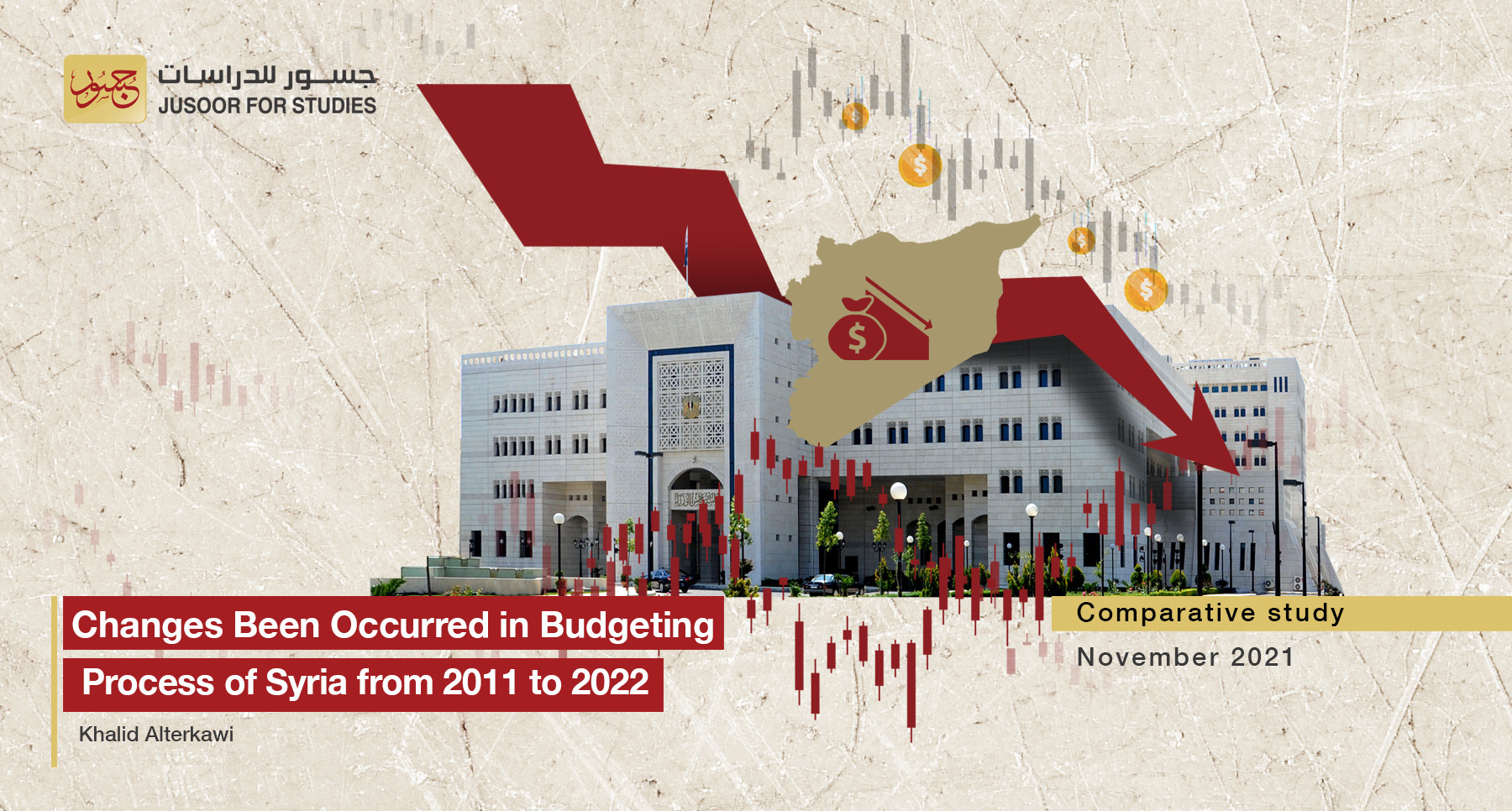Changes Been Occurred in Budgeting Process of Syria from 2011 to 2022
Font Size
Changes Been Occurred in Budgeting Process of Syria from 2011 to 2022
As 2022 approaches, the Syrian regime released the proposed 2022 draft financial budget with an amount of more than 13.3 trillion Syrian pounds, which is a very huge and unprecedented number.
In fact, the effectiveness of such an amount of money must be discussed at length and be considered in light of previous budgets and what has been actually implemented. Considering the development of the budget comes in order to draw a comparison, through which readers could make sense of what has been going on at the level of the budget in the Syrian regime's areas.
This report highlights the budgets over ten years and compares them to each other, denominated in the Syrian pound and the US dollar. It also reviews the initial deficit in each of these budgets and shows the reported and actual percentages in light of estimates based on what was approved in the years 2011 and 2013 and even what is discussed in the financial budget of 2014 and 2015. Also, the report reviews the main sources of funding to bridge the deficit as well as the developments of these sources, as well-experienced economists highlight the extent to which the Syrian regime succeeded in closing the deficit through these resources.
This report is directed to Syrians in general, as well as to those who are interested in the Syrian issues who wish to have a greater understanding of the role and importance of the financial budget in the context of the current economic events.
Accordingly, they could look at the whole Syrian budgets during 12 years and some total details related to their figures without going into many numerical details.
Key points can be observed in this report:
1. If the budget is measured in Syrian pounds, we find that its values are rising significantly, starting from 0.8 trillion in 2011 to more than 13 trillion Syrian pounds in 2022, but when it is measured in US dollars, we find that it is significantly declining, as it was in 2011 and 2012 about $17 billion to reach to less than $4 billion in 2022, due to the devaluation of the local currency, the decline in purchasing power, and the rise in inflation in Syria.
2. The declared deficits in budgets grew increasingly. In the case of 2011 budget, the deficit constituted 25%, and in 2014 and 2015 it reached 40%, and although it declined slightly in 2017, it returned to about 40% in 2020 and reached about a third in 2021 as the actual deficit was much larger than that, as it reached in some budgets more than 75%.
3. The regime was able to reduce deficits in some years, depending on external debts, especially from its main partners, as well as by resorting to royalties and confiscating the funds of traders and industrialists, as is the case in 2020, and it is believed that this approach continued in 2021 and to be the same in 2022.








